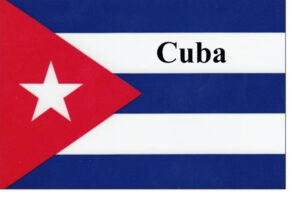 Cuba’s education system is run by the state. Their educational guidelines were established in 1976 and are part of the country’s constitution, which it states that all citizens have the right to a free education. No matter what the socioeconomic background of the student is, the state will provide the opportunity to study in accordance to their skills, social demands, and social economic development needs.
Cuba’s education system is run by the state. Their educational guidelines were established in 1976 and are part of the country’s constitution, which it states that all citizens have the right to a free education. No matter what the socioeconomic background of the student is, the state will provide the opportunity to study in accordance to their skills, social demands, and social economic development needs.
In Cuba, primary education begins at the age of 6 and is compulsory. It is divided into two cycles and lasts for 6 years. The first cycle (preparatorio) lasts for 4 years. During this cycle, essential skills are taught in subjects like Spanish and mathematics, giving children the important skills needed for their learning. The second cycle (culminatorio) lasts for 2 years. During this cycle, students continue developing the skills already obtained, while also learning new subjects, such as the History of Cuba and a foreign language.
Secondary education is taught in different schools: basic urban schools and boarding schools in the countryside. It is comprised of two cycles and lasts 6 years. The first cycle is compulsory and lasts for 3 years. During this cycle, students cover the basic education curriculum required by the State. After the 9th grade, students can choose any of the three paths offered in the second cycle, which is not compulsory. These three paths are: General College Prep Courses, Technical Course, and Vocational Courses. At the completion of their studies, students are awarded a Bachillerato or a Diploma in their technical specialty.
The most common grading scale in Cuba is as follows:
| Scale | Grade Description | Translation | U.S. Grade Equivalent |
|---|---|---|---|
| 5 | Sobresaliente/Excelente | Outstanding/Excellent | A |
| 4 | Notable/Aprovechado/Bien | Notable/Successful/Good | B |
| 3 | Aprobado | Pass | C |
| 0-2 | Reprobado/Suspenso | Fail | F |
The curriculum for primary schools consists of Spanish, mathematics, physical and musical education. For the second cycle of Primary education, students begin learning natural sciences, the history and geography of Cuba, and are also offered foreign language courses. Secondary schools cover the same range of courses taught in primary education, while also offering courses in chemistry, physics, and biology. Depending on the path the student has chosen for the second cycle, vocational studies and courses tailored to the specialty of their choice are offered.
In Cuba, all university students belong to the country’s University Student Federation, established by the revolutionary leader, Julio Antonio Mella, to defend the interests of students and marginalized workers. These students can choose to attend any of the 47 public universities on the island, including the University of Havana, Cuba’s oldest higher institution and one of the first to be founded in the Americas.
© 2025 Gaetranslations | Terms & Conditions
Website by: Timefortheweb